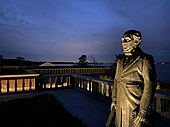
Daniel Chester French was an American sculptor of the late nineteenth and early twentieth centuries. He is best known for his 1874 sculpture The Minute Man in Concord, Massachusetts, and his 1920 monumental statue of Abraham Lincoln in the Lincoln Memorial in Washington, D.C.

The National Statuary Hall Collection in the United States Capitol is composed of statues donated by individual states to honor persons notable in their history. Limited to two statues per state, the collection was originally set up in the old Hall of the House of Representatives, which was then renamed National Statuary Hall. The expanding collection has since been spread throughout the Capitol and its Visitor's Center.

Alexander Stirling Calder was an American sculptor and teacher. He was the son of sculptor Alexander Milne Calder and the father of sculptor Alexander (Sandy) Calder. His best-known works are George Washington as President on the Washington Square Arch in New York City, the Swann Memorial Fountain in Philadelphia, and the Leif Eriksson Memorial in Reykjavík, Iceland.
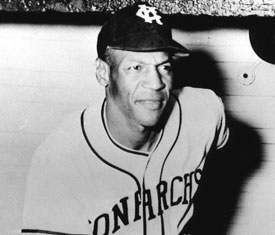
John Jordan "Buck" O'Neil Jr. was an American first baseman and manager in the Negro American League, mostly with the Kansas City Monarchs. After his playing days, he worked as a scout and became the first African American coach in Major League Baseball. In his later years he became a popular and renowned speaker and interview subject, helping to renew widespread interest in the Negro leagues, and played a major role in establishing the Negro Leagues Baseball Museum in Kansas City, Missouri. He was elected to the Baseball Hall of Fame in 2022 as an executive.

Charles Henry Niehaus was an American sculptor.

Lavinia Ellen "Vinnie" Ream Hoxie was an American sculptor. Her most famous work is the statue of U.S. President Abraham Lincoln in the United States Capitol rotunda. Ream's Statue of Sequoyah and Statue of Samuel J. Kirkwood, both part of the National Statuary Hall collection. Other notable works by Ream include the Statue of David Farragut and the Bust of Edwin B. Hay, which are also both located in Washington, D.C. Additionally, Ream created works which were displayed at The Woman's Building at the 1893 World's Columbian Exposition in Chicago.

The Missouri State Capitol is the home of the Missouri General Assembly and the executive branch of government of the U.S. state of Missouri. Located in Jefferson City at 201 West Capitol Avenue, it is the third capitol to be built in the city. The domed building, designed by the New York City architectural firm of Tracy and Swartwout, was completed in 1917.

The United States Capitol building features a central rotunda below the Capitol dome. Built between 1818 and 1824, the rotunda has been described as the Capitol's "symbolic and physical heart".
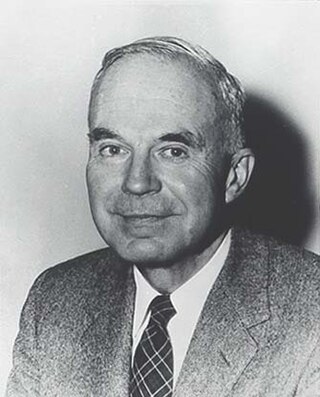
Walker Kirtland Hancock was an American sculptor and teacher. He created notable monumental sculptures, including the Pennsylvania Railroad World War II Memorial (1950–52) at 30th Street Station in Philadelphia, and the World War I Soldiers' Memorial (1936–38) in St. Louis, Missouri. He made major additions to the National Cathedral in Washington, D.C., including Christ in Majesty (1972), the bas relief over the High Altar. Works by him are presently housed at the U.S. Military Academy at West Point, the Library of Congress, the U.S. Supreme Court, and the United States Capitol.

Helen Farnsworth Mears was an American sculptor.

Melton D. "Mel" Hancock was a member of the United States House of Representatives from Missouri's 7th congressional district.
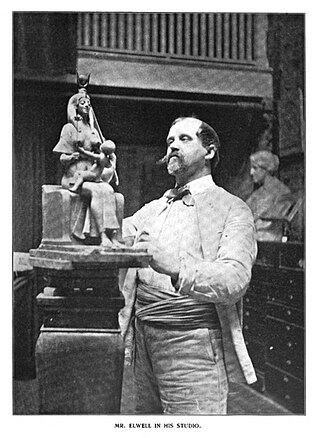
Francis Edwin Elwell was an American sculptor, teacher, and author.
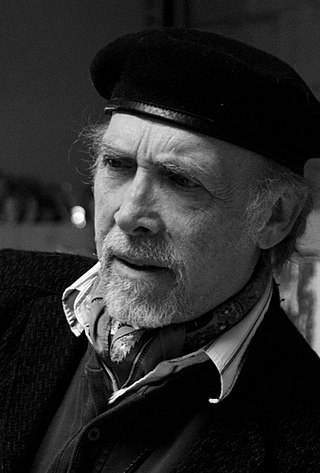
Eugene Daub is an American contemporary figure sculptor, best known for his portraits and figurative monument sculpture created in the classic heroic style. His sculptures reside in three of the nation's state capitals and in the National Statuary Hall in the United States Capitol. His work appears in public monuments and permanent collections in the United States and Europe.
Robert Merrell Gage was an American sculptor, frequently credited and better known as Merrell Gage.
The Hall of Famous Missourians is located in Jefferson City, Missouri. The hall is a series of privately funded bronze busts displayed in the Missouri State Capitol between the Missouri Senate and House chambers. The busts, created by Missouri sculptors Sabra Tull Meyer, E. Spencer Schubert, and William J. Williams, depict prominent Missourians honored for their achievements and contributions to the state. As of 2013, there were 44 inductees.

Frederick Cleveland Hibbard was an American sculptor based in Chicago. Hibbard is best remembered for his Civil War memorials, produced to commemorate both the Union and Confederate causes.

George Washington is a marble bust portrait of George Washington, done in the style of a Roman emperor, by the Italian sculptor Giuseppe Ceracchi. It was created as part of a campaign by Ceracchi to build a larger monument to Washington. The bust was thought by many to be one of the most lifelike. It was later used as a model of Washington for works by other sculptors and engravers.

George Washington was a life-size marble statue of George Washington, done in the style of a Roman general, by the Venetian-Italian Neoclassical sculptor Antonio Canova. Commissioned by the State of North Carolina in 1815, it was completed in 1820 and installed in the rotunda of the North Carolina State House on December 24, 1821. The building and the statue were destroyed by fire on June 21, 1831. This work was the only one created by Canova for the United States.
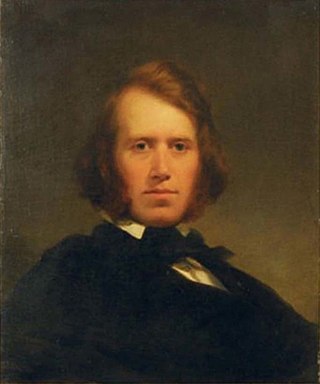
Horatio Stone, was an American sculptor, physician, and writer. He is best remembered for his three statues in the U.S. Capitol.




